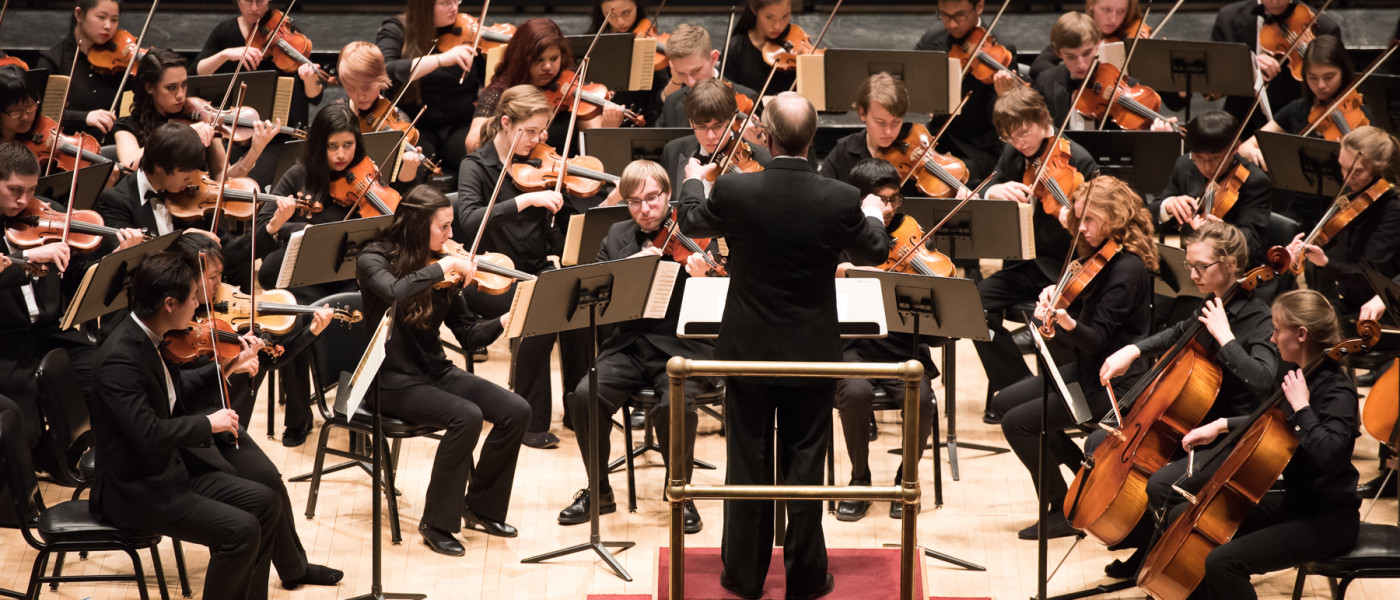Distinguished Concerts International New York (DCINY) presents “Grant Us Peace” in Review
Distinguished Concerts International New York (DCINY) presents “Grant Us Peace”
Distinguished Concerts Orchestra; Distinguished Concerts Singers International
Catherine Sailer, DCINY debut conductor; Trey Jacobs, DCINY debut conductor
Inglemoor High School Orchestra; James Rice, conductor,
Inglemoor High School Wind Ensemble; Ted Christensen, conductor
Stern Auditorium, Carnegie Hall, New York, NY
April 12, 2015, 8:30 PM
DCINY’s track record of high-quality music events continued unbroken on Sunday with the concert “Grant Us Peace,” featuring two classics by adult choirs and players, and two talented high school groups.
Dona nobis pacem (Grant us peace) is the final phrase of the Ordinary of the Catholic Mass, coming at the end of the Agnus Dei (Lamb of God) prayer for mercy. In our troubled age, any prayer for peace is welcome, especially the rich musical responses that have inspired composers over the centuries.
Mozart’s so-called “Coronation” mass (the nickname dates from the nineteenth century) premiered on Easter Sunday, April 4, 1779, in Salzburg, so this performance on Orthodox Easter was especially appropriate. Catherine Sailer, in her DCINY conducting debut, led the orchestra, chorus and soloists in a stylish rendition of this mainly optimistic celebratory music. The contrasts were precise, and the string playing was in good eighteenth century style without being overly dry. Standouts were the soprano Meeae Nam and the tenor Nathan Bird, whose voices were the epitome of Mozartean elegance and lyricism. The Agnus Dei soprano solo seems to foreshadow the emotional world of the aria Dove sono from Le Nozze di Figaro.
The group then turned to the vivid anti-war cantata Dona nobis pacem by British composer Ralph Vaughan Williams, who himself served in WWI and witnessed its horrors directly. It was conducted by another DCINY debut conductor, Trey Jacobs. In 1936, sensitive Britons were all too aware that their world was inching toward another cataclysm. Vaughan Williams uses the Latin phrase dona nobis pacem interleaved with poetry by Walt Whitman and an address to Parliament by British politician John Bright, along with Bible passages. The work thunders menacingly and has passages of great pleading, the loveliest of which, ‘’Reconciliation,’’ a solo for baritone, was rendered with attention to drama by Steven Taylor. Soprano Meeae Nam made the most of her repeated half-step implorations, turning to a more confident peaceful assertion by the end. The whole work made a great impact, although I might have wished for even more choral muscle, especially when the orchestra was given its full volume. But when they sang by themselves, as in the gorgeous hushed C Major final dona nobis pacem, they were superb.
After intermission, two groups from the Inglemoor High School in Washington State performed: the string orchestra and the wind ensemble. Both were enthusiastic and exhibited moments of maturity, despite minor discrepancies of intonation and ensemble. The string orchestra, in particular, under the direction of James Rice, achieved a hushed, mellow intensity in the haunting Meditation (from Serenade for Strings) by Jack Jarrett. The Ernest Bloch Concerto Grosso excerpt could have used greater rhythmic bite; the two movements from Holst’s St. Paul’s Suite (both jigs) were very successful, and there were smiles of recognition as the audience realized that Greensleeves was mashed-up with another folksong in the second excerpt. The wind ensemble from the same school, led by Ted Christensen, displayed great energy in a Dedicatory Fanfare by William Cherry, and The Florentiner, an “Italian” march by Hungarian composer Julius Fučik. In the programmatic Endurance by Timothy Mahr, they were called upon to use not only their wind instruments but also their own wind, with wordless vocalizes accompanying the music that seeks to depict the nearly-tragic Antarctica expedition of Ernest Shackleton in 1914.
Overall, a big congratulation to the music education and educators in public schools. Keep up the good work!

